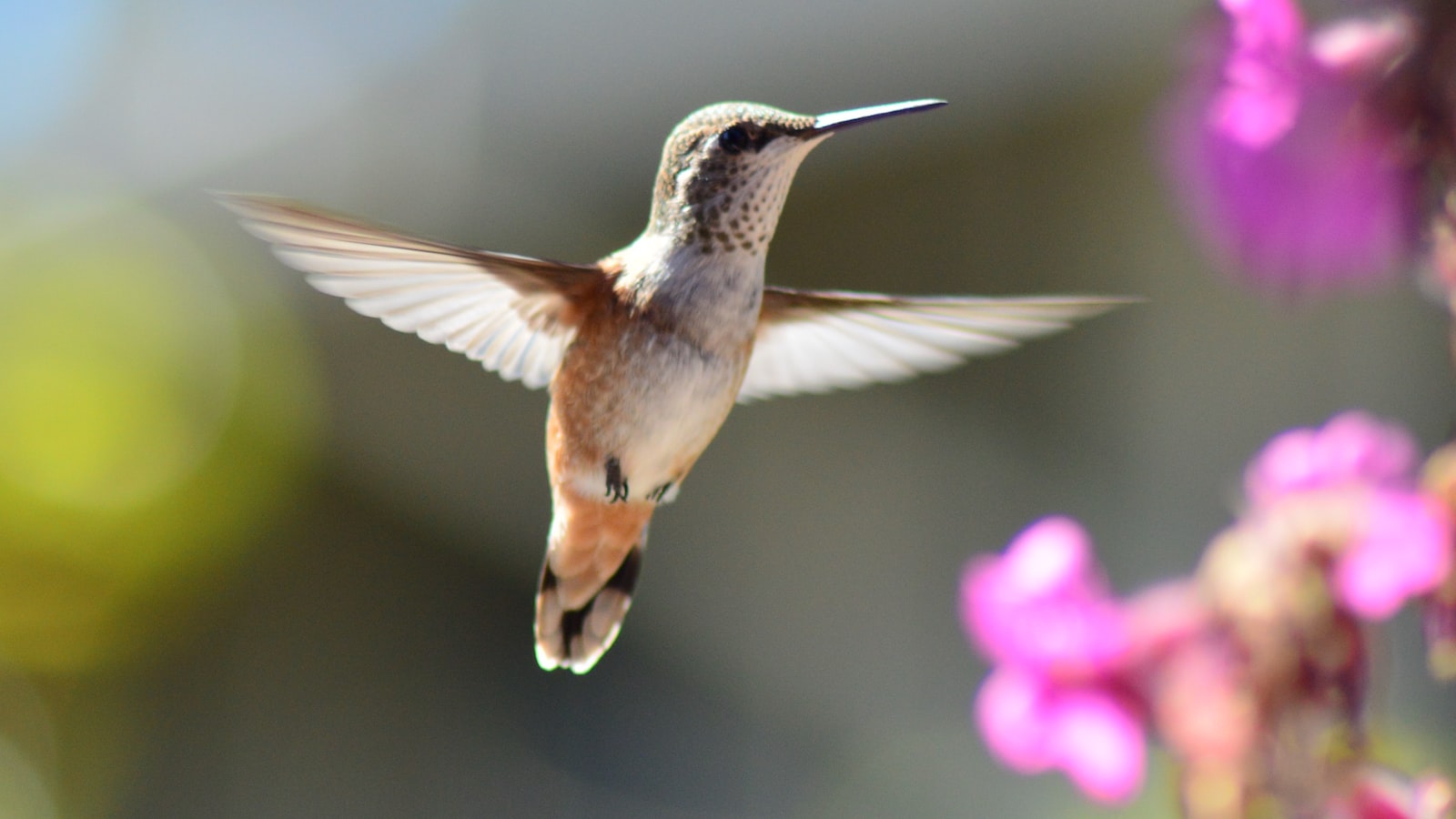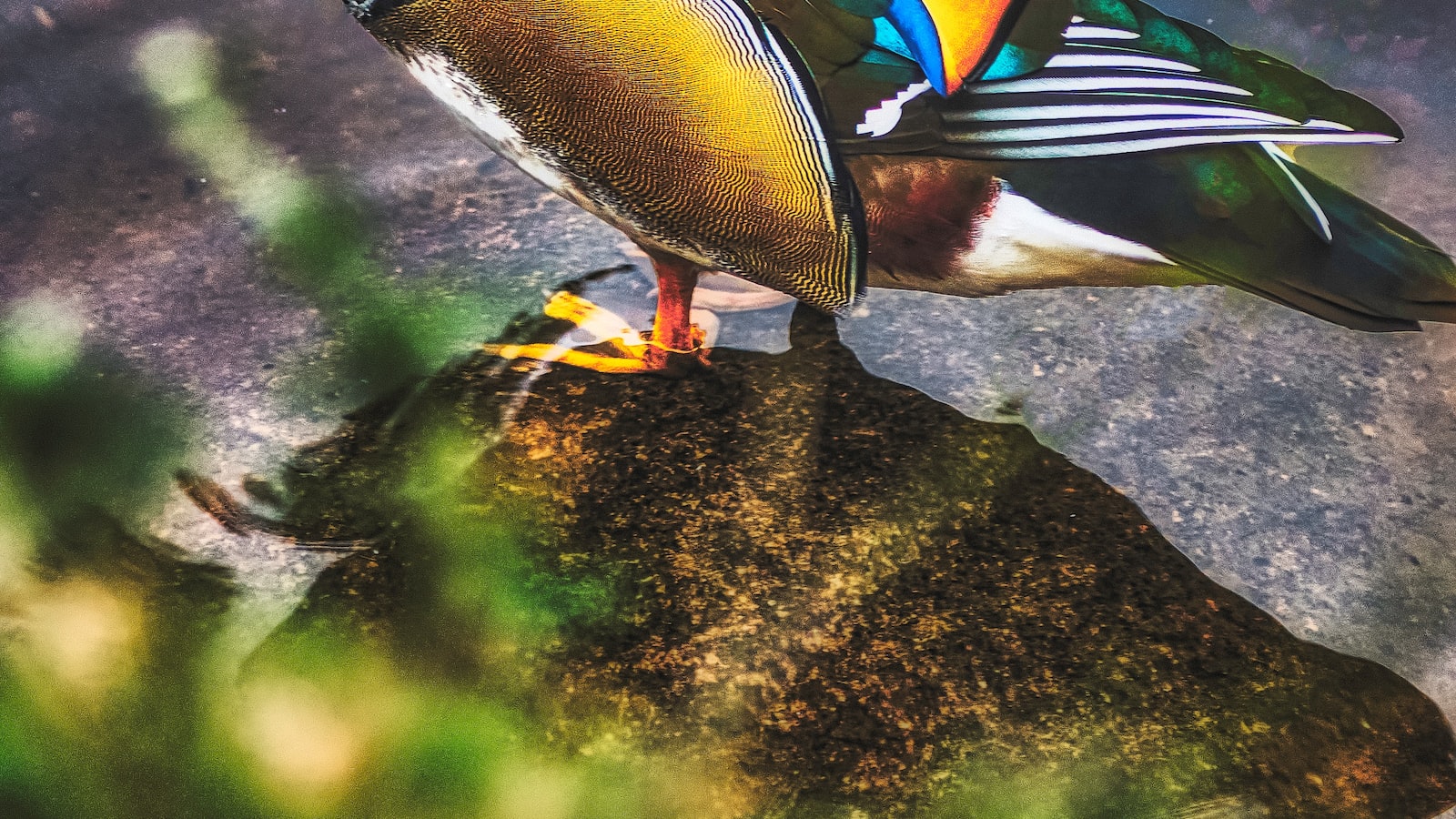
As the sun sets and the world around us prepares for a peaceful slumber, there is a nocturnal symphony that commences high above our heads. Whispers and hushed melodies fill the air, as birds take refuge in the safety of towering trees, seeking solace in the embrace of their leafy crowns. Yet, for those of us who appreciate the bliss of a quiet night’s rest, these avian lullabies may evolve into a cacophony of restless sleep and avian alarm clocks. If you find yourself yearning for uninterrupted nights, fear not, for we have gathered a repertoire of methods to guide you on the ethereal quest of keeping our feathered friends from claiming the trees as their melodious midnight retreats. Come, explore the fascinating realm of avian deterrents and embrace the serenity of a bird-free bedtime sanctuary.

Creating a Bird-Free Sanctuary: Effective Strategies to Deter Nocturnal Avian Visitors
Birds can be a beautiful addition to any landscape during the day, but when night falls, they can become quite the nuisance. To create a bird-free sanctuary and keep those feathered friends away from your trees at night, there are several effective strategies you can employ. By following these tips and implementing the right features, you can enjoy a peaceful night’s sleep without the chirping and fluttering overhead.
One effective strategy is to install motion-activated lights around your trees. Birds are generally frightened by sudden bursts of light, especially during their nocturnal explorations. These lights can be strategically placed among the branches, activating whenever a bird ventures too close. Additionally, you can utilize reflective materials and hang them from the branches. When hit by the light, these materials will create flashes and reflections, further scaring the birds away. Coupled with the motion-activated lights, this combination will effectively deter the avian visitors from roosting in your trees at night.
To enhance the effectiveness of your bird deterrents, you can also introduce sound devices and decoys. Nocturnal birds can be particularly sensitive to certain sounds, such as predatory bird calls or loud noises. Hang wind chimes or install speakers that emit these types of sounds among the branches. Another option is to use decoys, such as life-sized owl or falcon models, to scare off the avian visitors. Birds will perceive these decoys as threats and think twice before settling in your trees for the night. Combining these sound devices and decoys with the previously mentioned features will create an ideal atmosphere for keeping birds out of your trees at night.
| Features/Tips |
Description |
| Motion-activated lights |
Lights that automatically turn on when motion is detected, scaring away birds. |
| Reflective materials |
Hang materials that reflect light and create flashes to frighten birds. |
| Sound devices and decoys |
Utilize speakers emitting bird predator calls or loud noises, and place life-sized decoys of owls or falcons to deter birds from roosting. |

Nighttime Menaces: Understanding Why Birds Roost in Trees and the Risks Involved
Nighttime can bring its own set of challenges when it comes to coexisting with nature. Have you ever wondered why birds choose to roost in trees at night and the potential risks associated with it? Understanding the reasons behind this behavior can help us find effective ways to keep birds out of trees, ensuring a peaceful night’s sleep for all.
Loading... Seconds Left for
Miniature Orchid Terrarium Gallery!

Birds are naturally attracted to trees for several reasons. First and foremost, they provide protection from ground predators such as cats and foxes. Additionally, trees offer a sturdy perch that allows birds to rest and conserve energy during their active daylight hours. While this behavior is innate and important for their survival, it can sometimes be a nuisance for humans. From droppings that can cause damage to property to disruptive chirping that disturbs sleep, finding ways to deter birds from roosting in trees at night becomes crucial.
To keep bir
ds out of trees at night, here are some features and tips that can prove to be effective deterrents:
| Features/Tips |
Description |
| Reflective objects |
Hanging shiny objects like CDs or strips of foil can create flashes of light, scaring birds away. |
| Noise devices |
Using wind chimes or alarms that emit unpleasant sounds can discourage birds from roosting in trees. |
| Visual predators |
Placing fake birds of prey, such as owl or hawk decoys, in the trees can trick other birds into thinking it is an unsafe area. |
Remember, when trying to deter birds from roosting in trees, it is important to use humane methods that do not harm these creatures. Understanding their natural behaviors and needs can help us find creative solutions to peacefully coexist without causing harm or distress. So, don’t let nighttime menaces keep you awake, implement these tips and enjoy a restful night’s sleep while allowing birds to find safer spots.

Shooing the Feathered Freeloaders: Proven Techniques to Discourage Birds from Settling in Trees After Dark
Proven Techniques to Discourage Birds from Settling in Trees After Dark
If you are tired of the incessant chirping and fluttering of birds disturbing your peaceful nights, fret not! We have curated a list of proven techniques to keep those feathered freeloaders away from your trees once darkness falls. By implementing these strategies, you can finally reclaim your tranquil nights and bid adieu to the uninvited avian guests.
lumns: 2">
| Tip 1: |
Hang reflective objects, such as CDs or aluminum foil strips, from the branches of the trees. The flickering reflections of these shiny objects at night will discourage birds from landing and roosting on the branches. |
| Tip 2: |
Install motion-activated lights near the trees to startle any birds approaching your precious outdoor space. The sudden illumination will interrupt their settling process and make them think twice before perching on your trees. |
| Tip 3: |
Utilize ultrasonic bird repellers that emit high-frequency sounds inaudible to humans but deterring to birds. Simply place these devices near the base of your trees and let the frequencies do the work of keeping the birds away. |
These simple yet effective techniques will ensure that your trees become a “no-fly zone” for birds during the nighttime hours. Remember, consistency is key, so be persistent in implementing these measures to discourage the feathered interlopers. With a little determination, you’ll soon be able to enjoy peaceful evenings devoid of intrusive avian companionship.

Safe and Sound: Building a Sanctuary for Birds Away from Trees During Nights
Birds, with their melodious songs and graceful flight, are a cherished part of our natural surroundings. However, their propensity to roost in trees during nighttime can sometimes lead to unwanted consequences. For those looking to create a haven for our avian friends away from trees, there are several ingenious features and tips to consider.
One effecti
ve way to keep birds out of trees at night is by providing alternative roosting options. Installing birdhouses or nesting boxes in your garden can offer a safe and comfortable space for birds to rest. These cozy shelters can be strategically placed on poles or mounted on walls, away from trees, inviting our feathered friends to seek refuge there during the nocturnal hours. Additionally, creating a bird-friendly environment with feeders and water sources nearby can further entice them to choose these alternative roosting spots.
To successfully build a sanctuary for birds away from trees during nights, here are some features and tips you can implement:
| Features/Tips |
Description |
| Birdhouses or Nesting Boxes |
Provide safe and comfortable alternatives for birds to rest, away from trees. |
| Strategic Placement |
Position birdhouses or nesting boxes on poles or walls, ensuring they are not near trees. |
| Feeders and Water Sources |
Entice birds to choose alternative roosting spots by offering food and water nearby. |
Creating a sanctuary for birds away from trees during nighttime not only protects them from potential hazards like predators or harsh weather conditions, but it also allows us to enjoy their beauty and sweet melodies. By implementing these features and tips, we can foster a safe and sound environment where birds find solace and comfort, enriching our natural surroundings and forging a harmonious coexistence between humans and our feathered companions.
pan id="Frequently_Asked_Questions">Frequently Asked Questions
Q: What do you get when you mix a cozy tree with the nocturnal antics of birds?
A: A topsy-turvy late-night party for our feathered friends! But fear not, we have some tips to keep them at bay.
Q: How can you turn your tree into an exclusive roost-free zone after sunset?
A: Ahoy, night owl! Hang reflective objects, such as aluminum foil or CDs, from the branches. When the moonlight dances, it creates an eerie spectacle that even our feathered friends find a tad unsettling.
Q: What’s the secret to sending birds off to their own party elsewhere?
A: Set the mood with some bird-scaring tunes! That’s right, play some predator sounds on a loop near your tree using a gentle speaker. Nature’s DJ remix will make the birds reconsider their choice of dancefloor.
Remember, k
eeping those birds out of your trees at night requires a touch of creativity and innovation. So, let your imagination soar and keep those nocturnal chirps at bay! As the moon rises and darkness spreads its cool embrace, the harmony of nature paints a serene picture. But for some, the symphony of feathered creatures during the night may be more unsettling than soothing. If you’ve found yourself yearning for peaceful slumber, free from the chirping lullabies of our avian friends, fear not! By implementing a few clever strategies, you can gracefully bid adieu to the midnight serenade.
Remember, our winged acquaintances are naturally drawn to trees, seeking a safe refuge from the hustle and bustle of their bird-brained world. To thwart their nightly tree-top escapades, let us explore a realm of possibilities to maintain tranquility within your own personal oasis.
First, the power of illumination should never be underestimated. Strategically placing outdoor lights can reveal the hidden world beneath your favorite tree, making it less attractive to potential overnight guests. Flickering lights mimicking the movement of predators will send reassuring signals to our feathered friends, urging them to seek solace elsewhere.
For those w
ho prefer a subtler approach, a harmonious medley of sensory repellents can create an invisible barrier around your cherished arboreal haven. Experiments with nature’s potent scents – citrus zest, peppermint, or even a dash of cinnamon – can perplex our nocturnal companions, leaving them no choice but to seek more aromatic adventures afar.
One mustn’t forget the wonders of technology in this age of ingenuity! Intricate and delicate patterned wind chimes, symphonies of whispers within the gentle breeze, act as an auditory deterrent to the persistent winged creatures. Their melodious tinkling will cunningly sway any wayward soul from perching upon your tree’s majestic branches.
Lastly, never underestimate the value of physical barriers. While it may seem audacious to hinder our feathered friends from nestling amidst the leaves, be mindful of the sleepless nights that await you. Strategically placing mesh covers or netting around the lower branches will protect your coveted sanctuary, without causing harm or distress to our avian companions.
So there yo
u have it, weary souls in need of undisturbed rest. With the moon embracing the eve, you are now armed with creative and humane tactics to cherish the tranquil nights you so deeply deserve. With a delicate balance of nature’s essence and human inventiveness, may your dreams be blissful, and the trees serene. Good night, and may the solace of silence embrace your slumber!
Hello! I'm Jessica Owen, an avid gardener and proud contributor to Up-Gardening.com. Gardening is my passion, and I'm delighted to share my green-thumb experiences with you. From planting tips to nurturing blooms, I'm here to help you cultivate your own slice of paradise. Let's grow together in the garden!
Latest posts by Jessica Owen
(see all)




